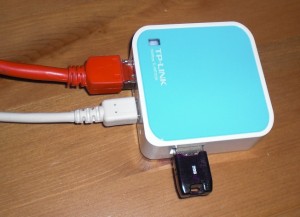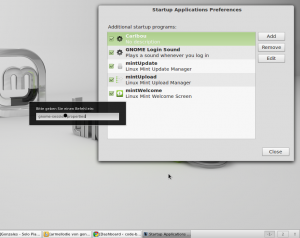How to increase storage on TP-Link WR703N with ExtRoot
 A few days ago I wrote about how you can flash OpenWRT on the TP-Link WR703N router and build a ~20$ cheap OpenWrt router this way. OpenWrt actually works quite well on the WR703N, but in retrospect the following problem arises.
A few days ago I wrote about how you can flash OpenWRT on the TP-Link WR703N router and build a ~20$ cheap OpenWrt router this way. OpenWrt actually works quite well on the WR703N, but in retrospect the following problem arises.
Unfortunately the WR703N has only 4MB flash (memory), so (depending on the selected image/firmware) after installing OpenWrt there will be just about 900 kB of free memory available. If you now want to install one or more extensions for OpenWrt, which in my opinion is one of the main benefits of using a OpenWrt system, you will be confronted with “no space available” messages in really no time. One solution to “bypass” this problem is to “ExtRoot” your router.
ExtRoot is a functionality that can be used to outsource the OpenWrt file system of the […]


 For one of my projects I was looking for a router that runs OpenWrt. But the all time classic of these type of routers, the Lynksys WRT54GL, is definitely too expensive in my opinion and so I searched a for a cheaper alternative. And I found it.
For one of my projects I was looking for a router that runs OpenWrt. But the all time classic of these type of routers, the Lynksys WRT54GL, is definitely too expensive in my opinion and so I searched a for a cheaper alternative. And I found it. Wunderlist is a tool for task management, which I use regularly. However, since I generally prefer native applications to web-based, the Wunderlist software also got it’s place on my Linux Mint system.
Wunderlist is a tool for task management, which I use regularly. However, since I generally prefer native applications to web-based, the Wunderlist software also got it’s place on my Linux Mint system.